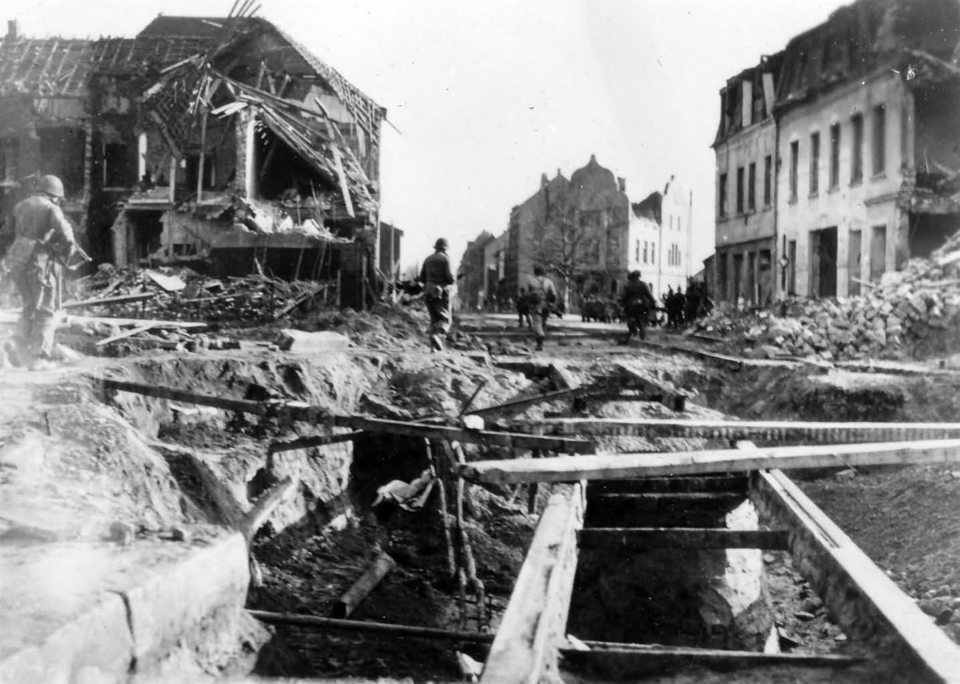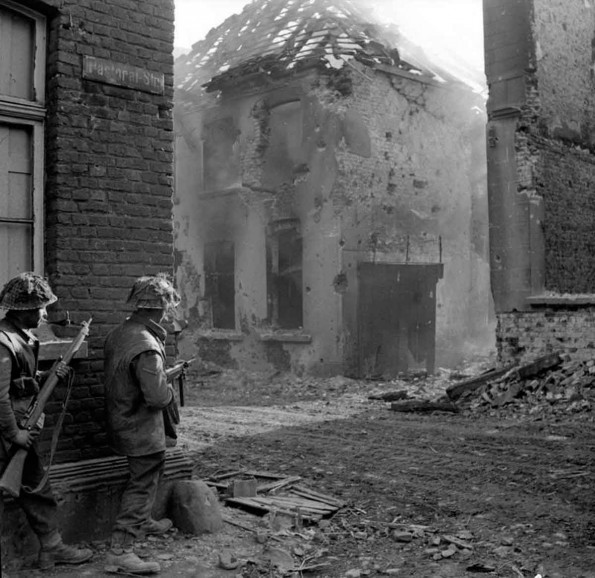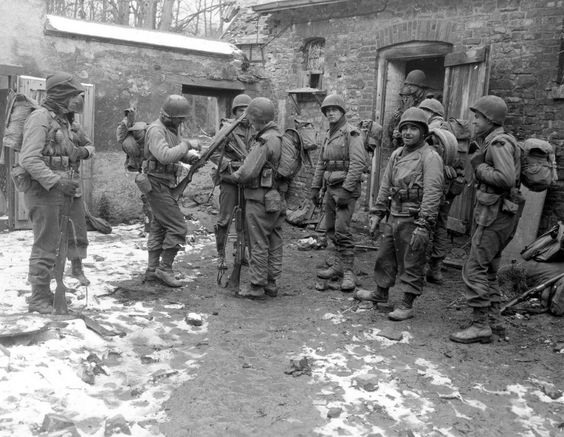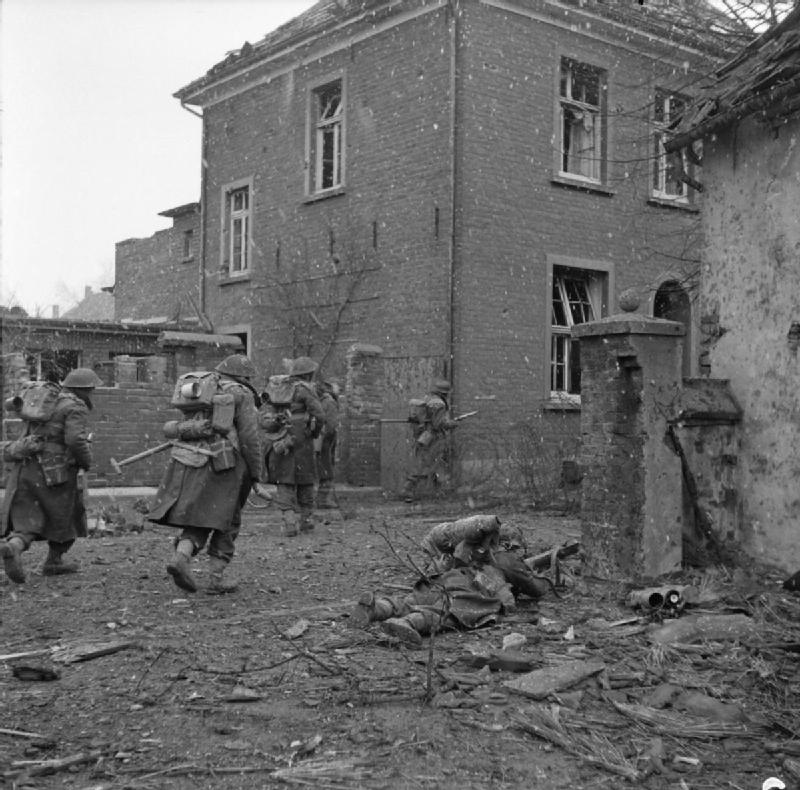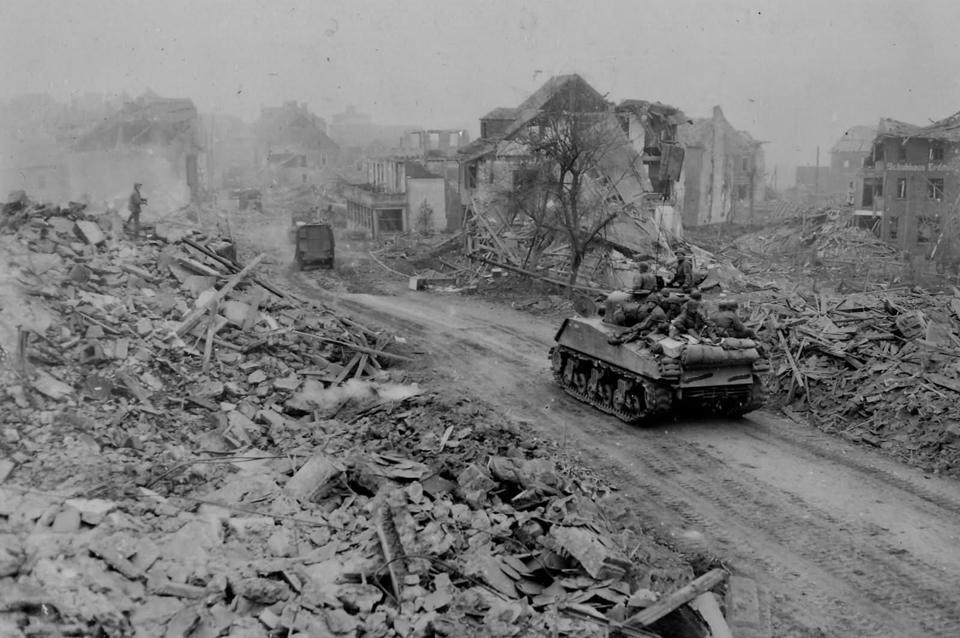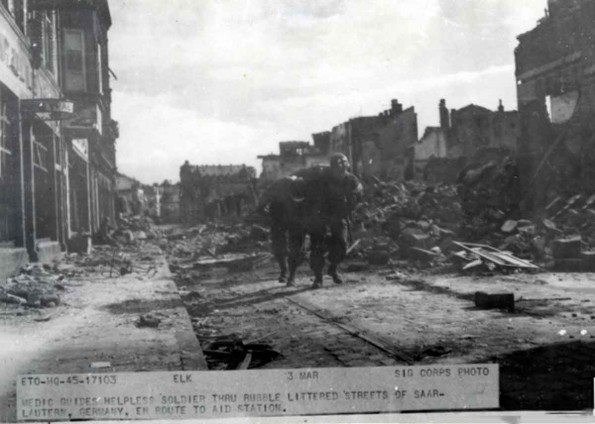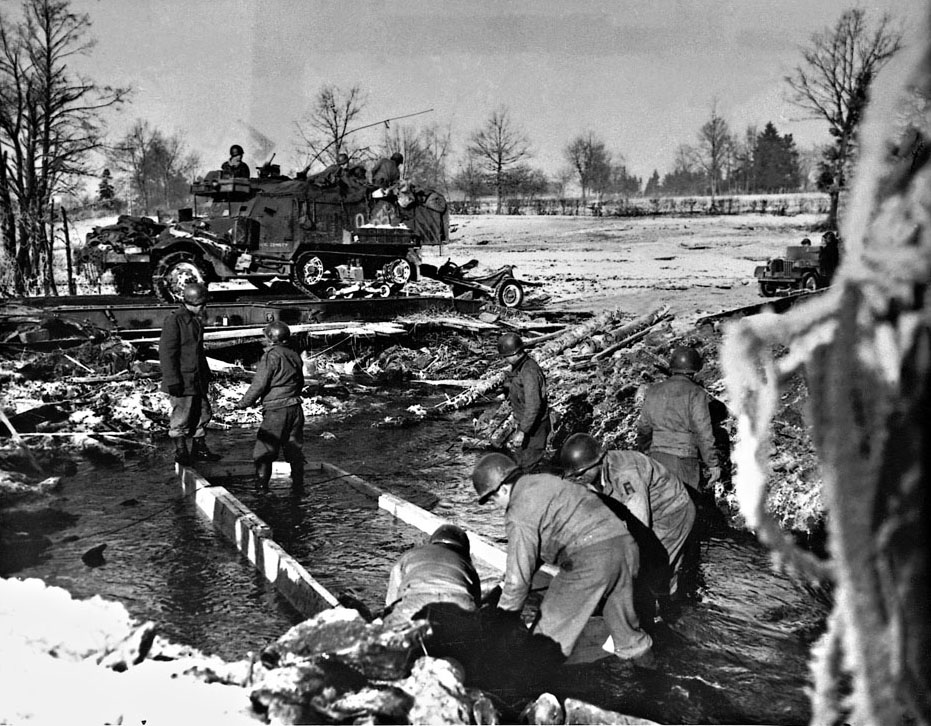Air Operations, CBI
BURMA- 10 10th Air Force B-25s and more than 80 fighter-bombers attack troops and many other targets immediately behind the Japanese Army battle lines.
- 2 B-25s attack a bridge at Loi-leng.
- 24 P-47s and 459th Fighter Squadron P-38s support Chinese Army ground forces near Mansam.
- 16 P-47s support British 14th Army ground forces near Mogok.
- 10 P-47s attack a bridge at Na-lang.
- 4 308th Heavy Bomb Group B-24s attack shipping in the Gulf of Tonkin and South China Sea.
- 3 341st Medium Bomb Group B-25s attack a bridge and rail line at Kep.
- 12 51st Fighter Group P-51s attack targets of opportunity between Nam Dinh and Vinh.
- 2 P-51s attack a Japanese Army headquarters in Hanoi.
- A P-38 with the XIII Fighter Commandís 18th Fighter Group downs a Ki-21 'Sally' bomber near the airfield at Phanrang.
Air Operations, East Indies
- XIII Bomber Command B-24s attack airfields in northern Borneo.
- 42nd Medium Bomb Group B-25s attack Ternate Island.
Air Operations, Europe
100 German night intruders attack more than 20 airfields from Northumberland to Oxon. 20 RAF bombers are destroyed for a loss of 6 intruders.
The Luftwaffe mount Operation GISELLA on this night, sending approximately 200 night fighters to follow the various bomber forces to England. This move takes the British defences partly by surprise and the Germans shoot down 20 bombers: 8 Halifaxes of No. 4 Group, 2 Lancasters of No. 5 Group, 3 Halifaxes, 1 Fortress and 1 Mosquito of No. 100 Group and 3 Lancasters and 2 Halifaxes from the Heavy Conversion Units which have been taking part in the diversionary sweep. 3 of the German fighters crash through flying too low. The German fighter which crashes near Elvington airfield is the last Luftwaffe aircraft to crash on English soil during the war.
RAF BOMBER COMMANDDaylight Ops:
- 201 Halifaxes of No. 4 Group and 21 Lancasters and 12 Mosquitos of No. 8 Group repeat the attack on Kamen. The synthetic oil refinery at Bergkamen is severely damaged in this accurate raid and no further production of oil takes place.
- No aircraft are lost over Germany.
- 212 Lancasters and 10 Mosquitos of No. 5 Group attack the Ladbergen aqueduct on the Dortmund-Ems Canal, breach it in 2 places and put it completely out of action. The gunners in the No. 619 Squadron Lancaster of Wing Commander S. G. Birch claim to have shot down a V-1 flying bomb near the target area. The V-1 was probably aimed at the port of Antwerp.
- 7 Lancasters are lost.
- 95 training aircraft make a diversionary sweep, 64 Mosquitos are sent to Berlin and 32 to Würzburg, 31 Lancasters lay mines in the Kattegat and in Oslo Fjord, 17 aircraft make Resistance flights, and there are 29 Mosquito patrols and 61 RCM sorties.
- 1 mine-laying Lancaster is lost.
GERMANY:
- 82 1st Air Division B-17s attack a tank factory at Hannover.
- 23 1st Air Division B-17s attack an oil refinery at Misburg.
- 24 1st Air Division B-17s attack a synthetic-oil plant at Ruhland.
- 166 1st Air Division B-17s attack the city of Chemnitz (secondary).
- 219 2nd Air Division B-24s attack an oil refinery at Magdeburg.
- 41 2nd Air Division B-24s attack a bridge at Nienburg.
- 48 2nd Air Division B-24s attack a marshalling yard at Bielefeld (secondary).
- 191 3rd Air Division B-17s attack a munitions plant and oil-industry targets at Brunswick.
- 53 3rd Air Division B-17s attack an oil refinery at Dedenhausen.
- 37 3rd Air Division B-17s attack an oil refinery at Dollbergen.
- 38 3rd Air Division B-17s attack an industrial target at Hildesheim.
- 50 heavy bombers attack various targets of opportunity.
- 9 heavy bombers and 8 of 584 VIII Fighter Command escorts are lost.
GERMANY:
- 9th Air Division bombers attack a communications center, two rail bridges, depots at five locations, an ammo dump, a concentration of motor vehicles, a marshalling yard, and targets of opportunity.
ITALY:
- 12th Air Force B-25s attack lines of communication in Brenner Pass and Po River valley bridges.
- XXII TAC P-47s attack a sugar refinery, dumps, and lines of communication.
- During the night, XXII TAC A-20s and A-26s attack a radar station, bridges and bridge approaches, light sources, and road traffic in the Po River valley.
Air Operations, Formosa
- Despite bad weather, 90th Heavy Bomb Group B-24s attack Kiirun harbor with the aid of H2X radar guidance.
- 22nd Heavy Bomb Group B-24s attack the Tainan airfield through a hole in the clouds.
Air Operations, Philippines
- 494th Heavy Bomb Group B-24s and 42nd Medium Bomb Group B-25s attack the Zettlefield airfield on Jolo and the San Roque airfield on Mindanao.
- 38th Medium Bomb Group B-25s attack the Basco airfield on Batan after diverting from their weathered-in primary and secondary targets on Formosa.
- A-20s attack Caballo Island and Echauge.
Air Operations, Volcano Islands
- Task Group 52.2 TBMs and FMs provide support for US V Marine Amphibious Corps ground forces on Iwo Jima.
- A VMR-952 R5D transport carrying ammunition, blood products, and mail from Guam is the first multi-engine airplane to make use of the partially rehabilitated 3,000-foot Motoyama Airfield No. 1 on Iwo Jima. The R5D evacuates USMC casualties on the return flight.
- 2 VC-81 FMs down a P1Y 'Galaxy' bomber at sea at 1215 hours.
Baltic
U-3036 is destroyed while being fitted out in a air raid on Bremen by B-17 bombers of the US 8th Air Force.
| Class | Type XXI |
| CO | None appointed |
| Location | Baltic, Bremen |
| Cause | Air attack |
| Casualties | Unknown |
| Survivors | Unknown |
Burma
Meiktila is completely occupied by Gen David Cowan's 17th Indian Div and the 255th Indian Tank Bde of the IV Corps. They immediately dig in. The main route for supplies to the bulk of the Japanese forces in Burma is, therefore, cut and they will be compelled to turn away from the fighting farther north and try to clear their lines of communication. At the same time they must do something to hold of XXXIII Corps to the north.
Chinese troops capture Lashio to the northeast of Mandalay. Lashio includes the northernmost of a series of vital airfields stretching throughout central and southern Burma, and each one captured provides extra logistical capability fof the Allied advance.
[Diplomatic Relations
Finland declares war against Germany with retrospective effect from September 15, 1944.
In the Act of Chapultepec 20 American states, meeting in Mexico City, pledge themselves to protect each other's territorial and political integrity.
[Eastern Front
CENTRAL SECTORThe right flank of the 3rd Panzer Army begins to abandon the Schwedt bridgehead as the 2nd Guards Tank, 61st and 47th Armies converge upon Stettin on the lower Oder. Heavy fighting rages around Lauban in Silesia.
[Germany, Home Front
German 15-year-olds are ordered to frontline duty.
[Italy
The IV Corps, US 5th Army, begins the second phase of its limited, local offensive against the hills northeast of Monte Torraccia and Monte Castello.
In the V Corps, British 8th Army, sector, the 56th Div takes a strong position on the east bank of the Senio near San Severo, and the Cremona group continues the battle for Comacchio.
[Iwo Jima
The 3rd, 4th and 5th Marine Divs continue to attack the strong Japanese positions. Hill 382, after yet another assault, is finally taken. Once the countless caves and tunnels have been mopped up, the 'Mincer' is securely in American hands; but at the cost of 6,500 American troops. The 5th Marine Div, on the left, attacks Height 362, using flame-throwers against the fortified Japanese positions.
Coastal gunfire damages the attack transport Bolivar (APA-34) which is the only naval casualty of the day in the area.
[Pacific
- The Japanese oiler Hario sinks when it hits a mine off French Indochina.
- The US submarine Sea Robin (SS-407) sinks the Japanese transport Suiten Maru (2500t) off Malang, Java.
- The US submarine Trepang (SS-412) sinks the Japanese gunboat No.2 Nissho Maru (1386t) off southern Honshu near Mijake Jima.
Philippines
On Luzon all Japanese resistance in Manila is at an end. The 20,000 defenders have been wiped out and the town devastated. With the liquidation of the Japanese units in the Ternate area the whole of Manila Bay is now also clear of the enemy. The 32nd Division (25th Infantry Division?), US I Corps, capture Digdig and prepares to elimnate some pockets of enemy resistance in the Puncan area, which part of the division now tackles.
Units of the Americal Division, US 8th Army, land on the islands of Burias and Ticao west of the San Bernardino Strait, without opposition. Verde Island is firmly in American hands.
In the 8th Army area the 186th RCT of the 41st Infantry Division on Palawan Island meets Japanese defenders. A five-day battle begins in which the Japanese withdraw into the mountains. American losses are light: 12 killed and 6 wounded. The Japanese lose over 900 men. The Japanese will continue to resist for another month. Airfield construction begins on the island.
[Western Front
Winston Churchill, during a visit to the Western Front, lunches at Jülich. This is the first time a British Prime Minister has set foot in Germany since Chamberlain went to Munich in 1938.
At Walbeck, southwest of Gelderen, contact is made between the British XXX Corps, Canadian 1st Army, and the American XVI Corps, 9th Army.
East of Sevelen, the 35th Div, XVI Corps, 9th Army, has to slow down in the face of severe opposition by the German paratroopers of the 1st Army. German resistance makes itself felt also in the XII Corps sector, but the 84th Div still succeeds in taking Rath and advancing toward Homberg.
The units of the VII Corps, US 1st Army, advance rapidly toward the Rhine, taking Sinsteden, Stommeln, Glessen and Dansweiller among other places, and then opening operations against the Königsberg, 104th Div. In the III Corps sector the 1st Div and the 9th Arm Div reach the Erft. On the south flank of the corps, the 78th Div retains its bridgehead near Hambach. The 2nd Div, V Corps, crosses the Rur at Heimbach and continues south toward Gemund.
There is no improvement in the situations of the 87th and 4th Divs, VIII Corps, US 3rd Army, virtually pinned down in the vicinity of Ormont and Reuth. Further south, the 11th Arm Div crosses the Prüm River and attacks toward the Kyll River, taking Fleringen, while the 6th Arm Div completes its advance from the Prüm to the Nims, which some of its units cross north of Schönecken.
The 5th Div, XII Corps, manages to secure a small bridgehead east of the Kyll. The 76th Div completes the mopping up along the Kyll and Moselle Rivers and during the night begins to cross the Kyll. The 4th Arm Div concentrates near Bitburg, a short way from the west bank of the Kyll, in readiness for an offensive across the river. In the XX Corps sector, the 10th Arm Div advances toward Schweich but has to halt at the Ruwer River, near Eitelsbach, where the bridge has been blown up.
In the 7th Army sector Forbach is taken.
[Images from March 3, 1945
|
|
|
|
|
|
|
|
First Flight Nurse on Iwo Jima |
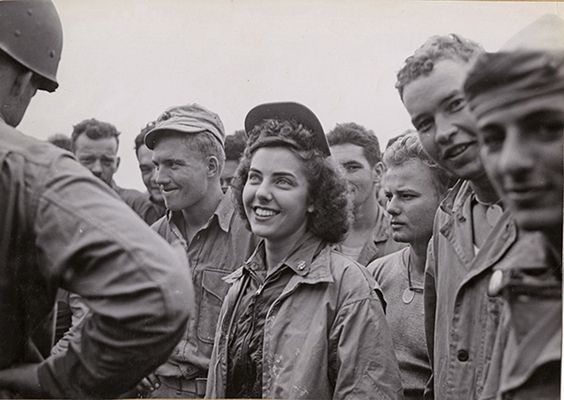 |

